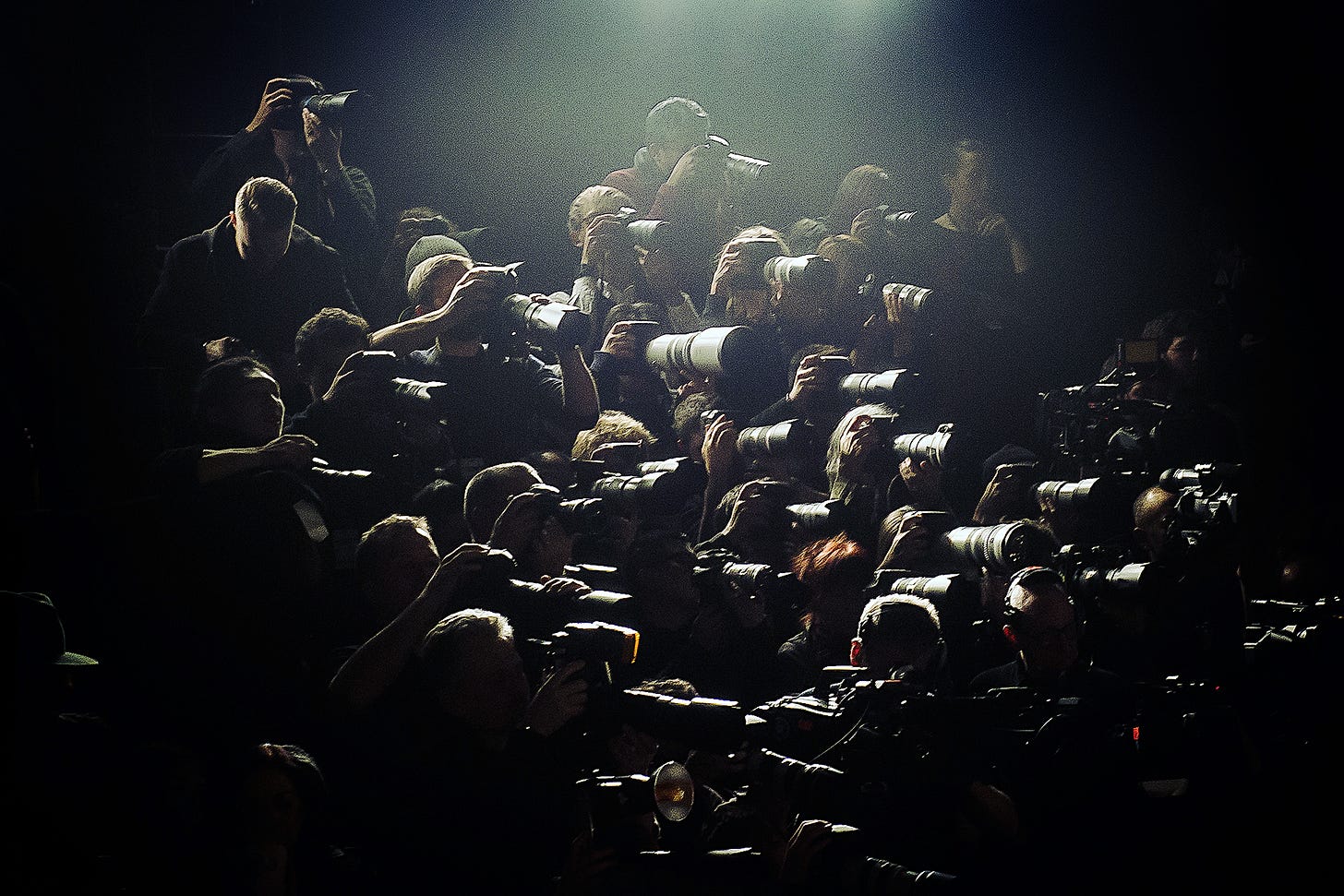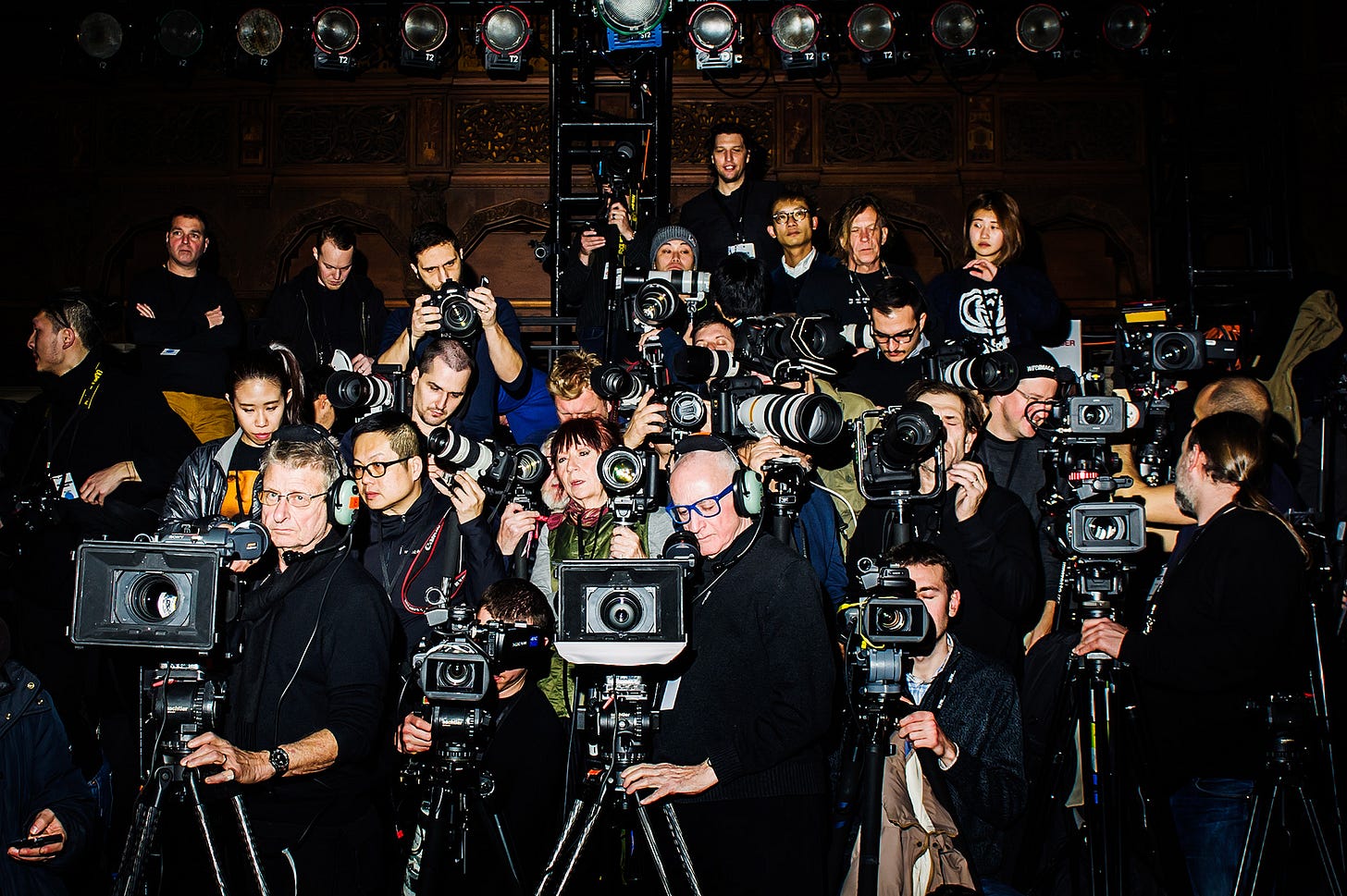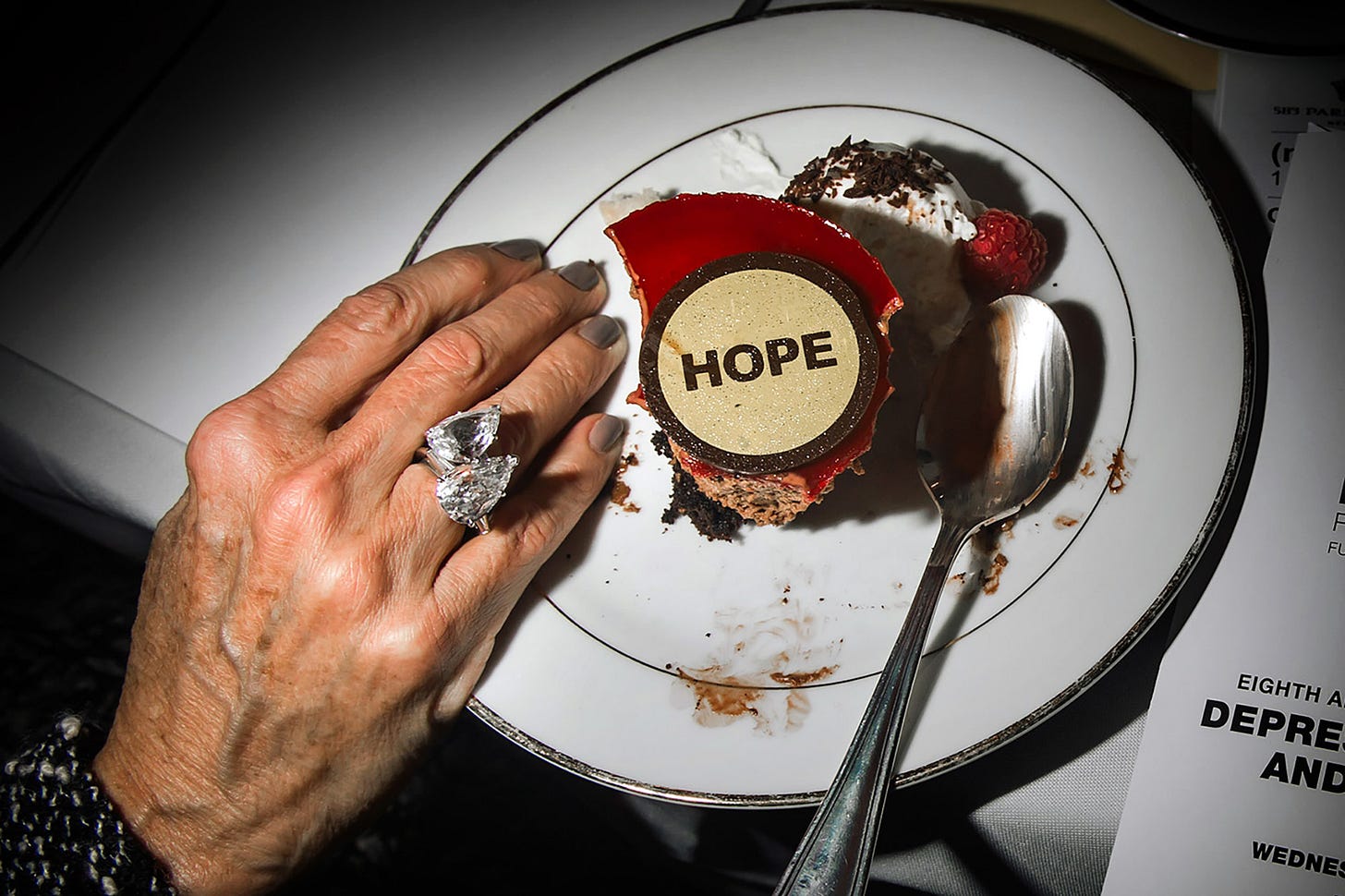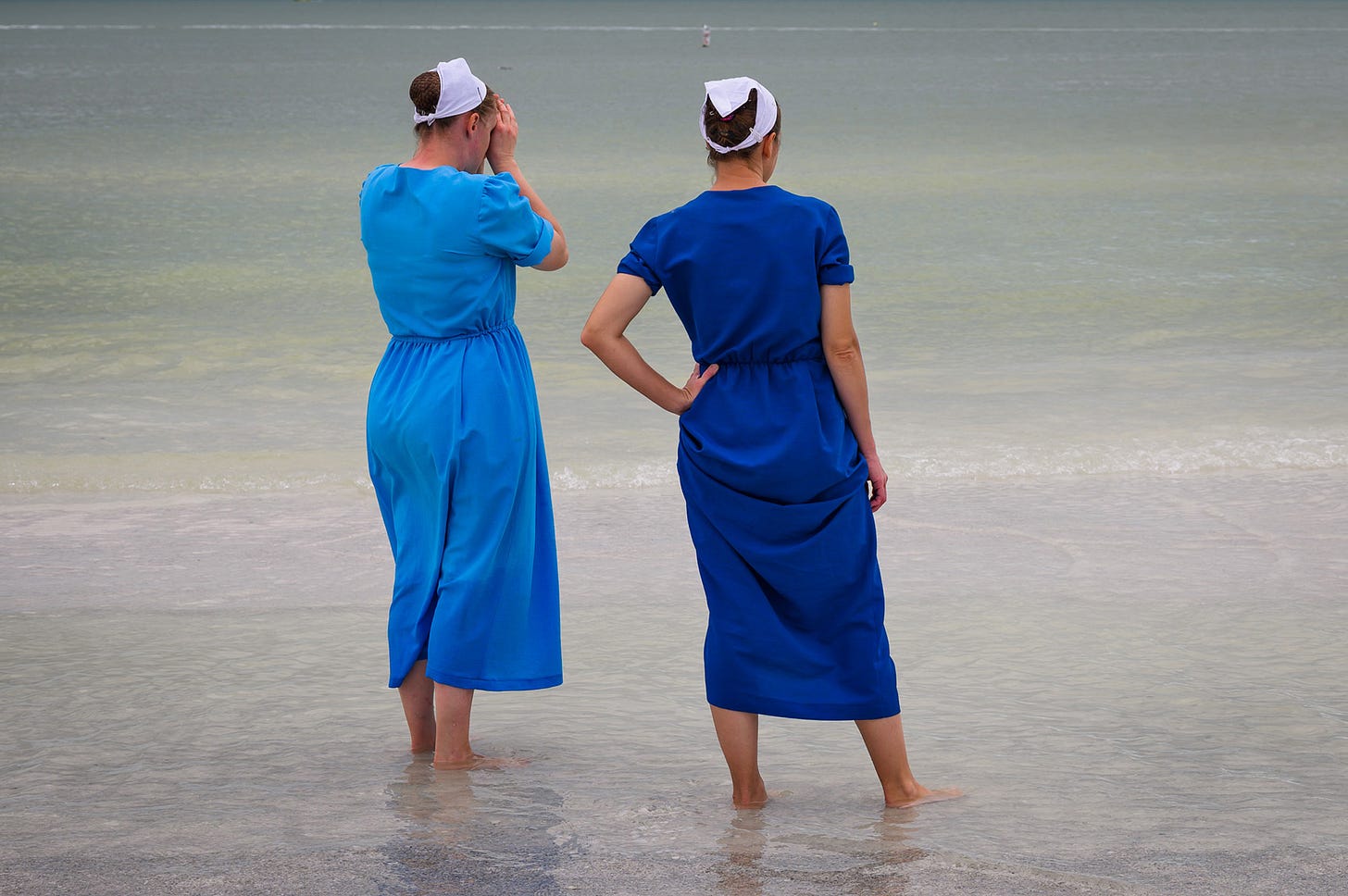Why Work for Exposure is Photography's Biggest Ponzi Scheme
And a riveting list of excuses by publications asking for free work.
Welcome to In the Flash, a reader-supported publication about intent and creativity in photography.
My inbox smiled at me this morning, “BBC Brand Promo – image request” was one of the emails promising a brilliant opportunity. The BBC proposed using two of my images from Where the Amish Vacation to promote their channel. A couple of years ago, I did an interview about the series, which became one of the most popular posts on the art section of their website, so being asked to promote the platform sounded fantastic. Then I got to the end of the email — “I’m afraid we’re unable to offer any financial compensation, but we hope you might be happy to be included in principle as part of this BBC Brand Campaign. All use is positive, celebratory, and non-derogatory, and I hope that you will be happy to be featured.”
Bollocks.
Work for exposure is the insidious scourge of professional photography. While it affects everyone at some point in their career, emerging photographers take the brunt. In my first five years of editorial photography, I was bombarded with offers ranging from no fees per project to compensation so ridiculous that it made working for free sound like a more dignified option. At the time, I said “yes” to almost all of them.
Newcomers are the primary targets of requests for free work because it is really, really hard to pass up getting your photos out into the world for the first time. And if one photographer declines, the next person on the list will take the job. This creates a vicious cycle that allows such exploitative practices to thrive. Photographers keep saying yes, hoping that this will lead to a future project with a big paycheck. More often than not, it leads to more work for exposure requests.
Then there are hobbyist photographers who are happy to be published, compensation or not. Many of them are well-established professionals with other careers and are able to jet-set across the world and take photo workshops. A chance to publish one of their photos in a magazine is a dream come true, and many don’t even think to ask if there is a fee attached. Even if there is, the measly $200 (that’s if you are lucky, some publications offer $75) is lunch money that is not worth filling out a tax form and the long questionnaires required to get paid by any magazine.
I understand the desire of someone whose income doesn’t depend on photography to see their work published for bragging rights, and I hold nothing against them. My gripe is against the publications that exploit such desires, deciding who is worth offering compensation to and who isn’t. Sometimes, a company proposes the exact same job to one photographer with a fee and to another without one. The only way we can find out about such sneaky practices is through a few dedicated Facebook groups. Every week, there are posts comparing notes on work for exposure stories, and the replies often expose discrepancies between rates and lack thereof. This doesn’t just affect hobbyists and newcomers, but brings down the rates for seasoned photographers who now have to compete against what is essentially treated as cheap labor.
Publications and brands figured out this Ponzi scheme years ago. Requests for free work are being offered not just without an apology but with phrasing that reads like the company is doing you a favor, gilding the offer as a fabulous opportunity that the photographer would be stupid to pass up. I asked fellow photographers to share (anonymously) some of the emails of this type that they received.
Here are some of my favorites.
“It would be collaboration and the images would be used in the magazine and on social media, obviously with credits in the Index, in your section, and on social media! And of course, we will be sending you a couple of magazines once they are printed!"
Collaboration is a popular euphemism for such requests, making free work sound like a more dignified endeavor.
“We don’t have the budget for this, but we will credit you.”
Wielding credits like a favor is even more popular than collaboration (note its use in three of these quotes) and the one that incenses me in particular. 80% of requests for photos without licensing emphasize that they will “Of course!” credit the photos, as if not doing so is an option. Including credit is not just the bare minimum, it’s non-negotiable. Every publication using a copyrighted image, paid or not, has to credit the photographer.
“We offer full credit for the publication, but we unfortunately do not have a budget for fees, as it's a journalistic piece about the history.”
Another common trope is making the project seem noble, therefore above petty mercantile concerns. This request, though, is particularly inane since neither documentary nor archival requests are ever exempt from licensing.
“We are a non-profit and unfortunately we don’t have a budget for photography”
In the virtue pyramid of work for exposure keywords, non-profit is king. By asking the photographer to give their time and work for free, these companies shift the responsibility for their financial decisions onto the creatives. Photography always gets the fuzzy end of the lollipop. The reason is simple — few other professionals would give their work for free, non-profit or not.
“Because we are a small indie company”
Less dignified than non-profit but just as incompetent with their budgeting.
“The photo will be used for educational purposes”
This one uses the same virtuous sentiment as non-profit or indie with hopes that photographers don’t realize that textbooks and educational materials do pay photographers for their involvement. I had a few textbooks ask for photos throughout the years, and all of them licensed the images.
“If we paid photographers to be featured on our site, we simply wouldn't exist. We're a business with employees and costs like any other, and without revenue, we can't operate.”
I like this response. It is honest and lacks the usual gilding of the lily. But while this rings true, it is a devastating confession from a dedicated photography platform (with advertisements) admitting that the very people it claims to support are the least important aspect of their business model.
“There is no fee for you to be featured :) ..We love having this platform where it can help so many photographers.”
This request from Shotkit, complete with a smiley face, takes the prize for one of the most insulting work for exposure inquiries that I have received. The site asks photographers to share their equipment by laying it all out and photographing the smorgasbord. The final article links all the gear with shopping sites, disguising clever advertising as a feature about the photographer. When I pointed out that the website is a minefield of ads and asked for a fee, the editor seemed aghast. “Yes, we do have affiliate links on our website that cover the costs of managing a website and staff like myself for the work we do,” after which she proceeded to tell me that the feature would also require me to submit 5–10 photos and do the write-up myself. The audacity of such an ask seemed lost on the editor, and my last email calling out the exploitative nature of such a model went unanswered.
A photography career is tough. In 2019, photographers made it to one of the 25 worst jobs in America. Since then, things have slightly improved, but the average photographer salary in the United States is currently at $33,968, with the top 10% earning around a whopping $77,760. Such top earners are photographers who we would call “successful,” having their own businesses and working for big-name magazines. To put things in perspective, the starting salary for an entry-level software engineer is $87,798. Which means that the top 10% of photographers make less money than most other straight-out-of-college professionals.
Work for exposure may not be the main reason for such bleak prospects, but it certainly contributes to it. Its Ponzi scheme relies on unpaid labor, promising big returns for participation and continuing to sell the industry as elite. It feeds on the newcomers but affects older photographers even more by diminishing the worth of their archive.
Still, because popular culture propagates the romantic ideal of the artist, photography remains a coveted career. In the 1960s, Blow Up famously elevated male photographers to the status of God, and in the last few decades, women have caught up as well. Of the acceptable careers for a heroine in movies, the top three are models, designers, and photographers. Such sparkly prestige is one of the reasons for the (sadly, correct) assumption that many people would be willing to work in the industry for free. It’s silly to imagine that the same non-profit and indie start-ups would offer their office designers or accountants a chance to collaborate for exposure. These companies make the conscious decision that photography is the one area where they don’t have to allocate funds. A friend of mine shared a story of a publication telling him a sob story about not having a budget while having the whole office outfitted with famously expensive Herman Miller chairs.
When the BBC writes, "We’re unable to offer any financial compensation,” what it really means is that they are unwilling to do so. A huge enterprise like that is able to get away with the ask because at least half of the photographers on their list will say “yes," seduced by the status of the brand. But if everyone of the photographers refused to participate, they would have to go back to the drawing board and allocate the funds necessary for such promo campaigns to exist.
In my conversation with Shotkit, a different editor chimed in, “Yes, I fully agree that photographers need to be compensated for their work, but I'm also of the opinion that some photographers actually want this exposure despite it being unpaid.” This diagnoses a big part of the problem. We, photographers, are easily beguiled by the promise of exposure and agree to things that no other working professional would consider acceptable. The competitive reality of the industry makes it hard for anyone to pass up what seems like an opportunity. What the Shotkit editor got backwards about photographers wanting exposure despite being unpaid is that the power dynamics at play make it feel like we don’t have much agency or choice in the matter. That is the very nature of exploitative work practices.
Even after a decade in the industry, I still find it hard to say “no,” especially to a dream publication like the BBC. The interview that I did with them about Where the Amish Vacation was also done pro-bono, but it did involve what I, at the time, considered “exposure"—a chance of being featured on my favorite channel as well as having paid opportunities knock on my door because of it. None came. Instead, a couple of years later, I got the campaign request above, which made me realize: What do I have to lose by saying “no”? Not get paid again?”
If you would like to share a work for exposure story, please leave in comments.
Find me on Instagram
In the Flash is a reader-supported publication about intent and creativity in photography. Many of the posts are open to the public, but paid subscribers receive all of the articles, have full access to the archives and keep this newsletter going.







Update - The BBC got back to me, apologizing, saying that my feedback has been noted, and that they hope to work together on a project with less financial constraints int he future.
Considering that most publications ghost or make you feel stupid when you insist on a fee, this was a nice gesture.
A colleague once said "Being offered photo credit is like being offered a cigar from your own box."